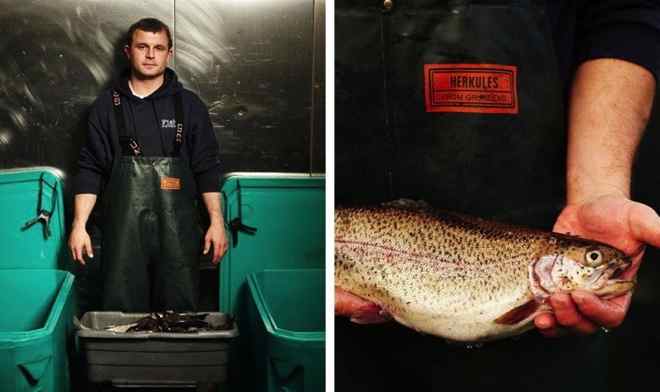One of the main themes at the Social Capital Markets (SOCAP) conference in San Francisco, CA this year was an exploration into the sustainability of Earth’s oceans. While many conscious eaters understand the values behind “cage-free,” “grass-fed,” “organic,” or vegetarian diets, there is less awareness surrounding seafood choices and the impacts that they have on our planet and our health.
One half of the seafood we eat globally is farmed through a wide variety of aquaculture methods, and this rate is growing rapidly. Kenny Belov, Founder of TwoXSea, says that “the way we are eating fish is unsustainable.” Through his research, advocacy, and Sausalito, CA restaurant Fish., he aims to alter the way in which seafood is farmed, caught, and handled, from fishery to plate.
Currently, as with many items on our plates, a lot of the costs associated with fish are externalized. Consumers are not paying for the real costs associated with fish waste, environmental impact, antibiotics and chemicals, high energy distribution costs, and the common diseases and parasites that infect fish populations.
Even when consumers are trying to do the right thing and buy local or sustainable fish, labels are often deceiving. Steve Vilnit from the Maryland Department of Natural Resources said, “The dirty little secret is that Maryland crab cakes aren’t crab from Maryland.” And that may not be tuna or salmon in your sushi, either.
So what exactly does “sustainable fish” entail? The lack of transparency within the fish industry can make that difficult to figure out. Often, the diets that fish consume are not considered in recommendations for sustainable fish, and farmed fish are being fed food that is made up of other animal proteins like chicken or other fish. It can take two pounds of fishmeal to produce one pound of fish – a costly and inefficient ratio for people and the planet, and one that Belov is working to change.
Over the past four years, Belov and his team at TwoXSea have been working to develop a plant-based fish feed. The vegetarian feed has no corn, and is primarily made up of spirulina, algae, and flax seed. Removing soy will increase the cost of the product, but Belov says that it is a priority. Currently, this feed is more expensive than its animal protein counterparts; but Belov is determined to build the demand, research alternatives, and bring the cost down to inspire fish farms all across the country to adopt this feed. In California, Belov is exploring the possibility of using agricultural waste from almonds, cheese, and beer and turning it into fish meal. “There is a lot of research that needs to be done. It’s a big job, but it needs to be done,” he says.
TwoXSea, organizations like the Future of Fish, and companies like Clean Fish and SweetSpring Salmon are developing and introducing responsible methods for farming and consuming fish. This work is critical for both global food security and protecting the future of our seas. Belov is deeply committed to increasing awareness about the importance of our oceans, what we harvest from it, and when. “We especially need to integrate this knowledge into our school systems and educate kids,” he says.















